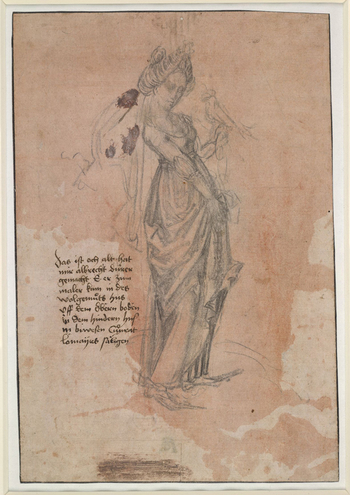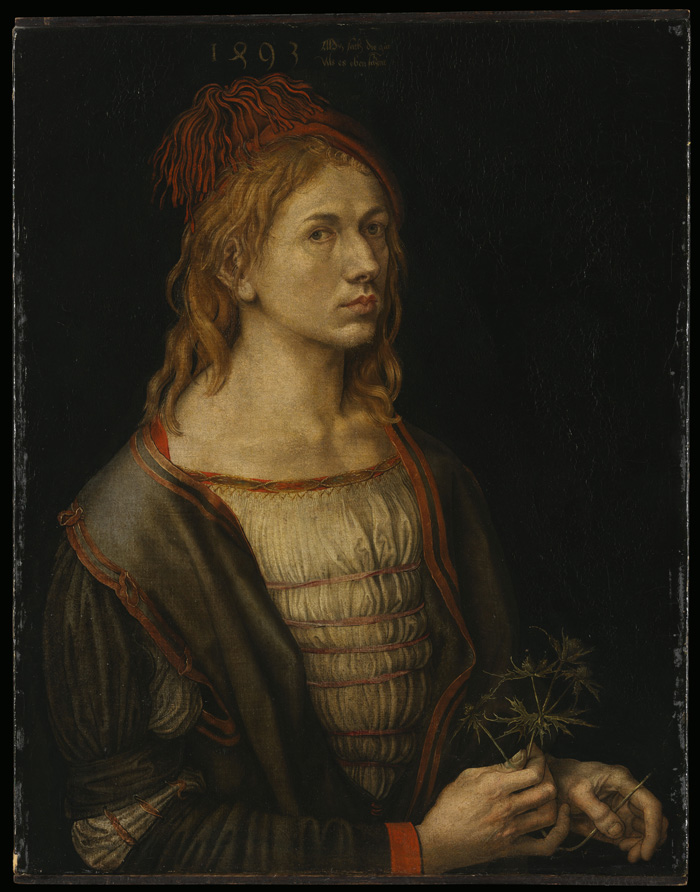The early Dürer
Historiographic models for an enhanced understanding of Albrecht Dürer's early work
Project duration: 2009 – 2011
Project sponsorship: Federal and State initiative “Pakt für Forschung und Innovation“ (“Joint Initiative for Research and Innovation“) within the framework of a competition among 86 research institutions of the Leibniz Association
Under the title “The Early Dürer. Historiographic Models for an Enhanced Understanding of Albrecht Dürer’s Early Work“, controversial interpretive models are being examined regarding the phenomenon Dürer. Why were the years 1480/1500 so crucial for the epochal innovations in Dürer’s work and what were they?
The exhibition “The Early Dürer“ and its accompanying catalogue, the results of a three-year research project, highlight the conditions for Dürer’s creativity, placing it within the artistic, intellectual and economic developments of the late 15th century.
Find out more about the
exhibition “The Early Dürer“ (Webpage in german)
Why “Models“?
The term model in the project title should make it clear that opposite research positions together with their competitive methodological premises will be addressed. No other artist of the German language region has experienced more diverse characerisations between humanist and media revolutionary, between early national monopolisation and the ideal of liberated, European artistic individuality than Dürer. Correspondingly diverse are the hitherto explanatory models for the construction of Dürer’s art in Nuremberg around 1500. In need of inventorisation and supplementation, the project focuses on following question: what personal and specifically Nuremberg constellations around 1480/1500 led to Dürer’s repositioning as “modern“ artist, a question often too narrowly described art-historically. The project investigates more consistently than before how Dürer is to be understood in the context of his surrounding, artistically as well as socially.
Connoisseurship and Work Appraisal. Biographics as Chance or Trap
Which worksmay generally – and to what degree of certainty – be determined as early works by Dürer?
Already since the early 17th century Dürer’s admirers, collectors and chroniclers have compiled catalogues of his graphic works and paintings, which art historians have continued up to our own day. As in-depth argumentation and normative standards deviate, so does the recognition of these publications. While the approximately 100 single leaf prints by the young Dürer hardly cause any controversy among connoisseurs, the majority of the roughly 30 paintings and 300 drawings continue to occupy experts regarding authenticity. It is especially in reference to a series of disputed drawings that the limits of connoisseurship should be more clearly presented than before, taking account of all possible arguments. Frequently works have been connected to biographical events in Dürer’s life, indeed, exploited for the purpose of the mutual illustration of work and biography. The question is what possibilities and dangers are inherent in such circular argumentation and what conclusions may be drawn between biographical event and the work that needs to be authenticated.
Five Focus Topics
Five paradigmatic areas of activityof the “young Dürer“ are his alleged passion for travel, his unique self-portraits, his autonomous drawings, his pioneering work in the medium of print, and his intellectual struggle for a universal understanding of the world. Five work packages were defined in order to test the sustainability of these paradigms:
- Dürer’s early travels. Artists’ mobility between educational ideal and economic necessity.
- Dürer’s self-portraits. Reasons and practice of self-representations around 1500.
- Dürer’s early prints. Aesthetisation of an early mass medium?
- Dürer’s excessive drawing. Beginning of an autonomous artistic genre?
- The humanist Dürer. Cliché of literary hero worship or archetype of the modern artistic image.
Art Technology and Project Communication
A further component of the Leibniz undertaking are new, technological examinations of significant individual works. Since Dürer’s works are scattered over many international collections, the Institute for Art Technology and Conservation of the GNM, in its first phase, will collect the external technological results as far as they are available. Demand for further research will be determined on the basis of the material thus collected and will be conducted in cooperation with the external Dürer collections. An infrared camera with an especially wide field of vision developed in 2006 at the National Gallery, London, will be made available for this, offering the latest facilities in technical analysis. In order to provide an efficient, in-house collection of materials for the use of staff members, the Department for Computer-Based Museum and Cultural Information of the Germanisches Nationalmuseum developed a database of technical details and interpretative approaches to Dürer’s works. A newly furnished Dürer scientific work platform for discussion and as material pool is available to internal and external project partners.
Project Results online © 2012
You will find project results to following subjects at http://duererforschung.gnm.de (Webpage in german)
- Biography of the young Dürer
- Dürer’s surroundings
- Dürer Laboratory
- Dürer network
- Celtis epigrams
- Dürer bibliography
- Medial realisation in film sequences
- Chronicle of performances
Resonsable
Dr. Beate Böckem
Shira Brisman M.A.
Katrin Dyballa M.A.
Dr. Thomas Eser
Mark Fichtner (Dipl.-Inf.)
Peggy Große M.A.
Sebastian Gulden M.A.
Julia Halbleib
Dr. Daniel Hess
Dr. Dagmar Hirschfelder
Catharine Ingersoll M.A.
Oliver Mack M.A.
Marie-Christin Neidert
Dr. Stephanie Porras
Jaya Remond M.A.
Dr. Barbara Rök
Dr. Lothar Schmitt
Monika Uliarczyk
Bayerische Akademie der Wissenschaften, München
Deutsches Studienzentrum, Venedig / Centro Tedesco di Studi Veneziani
Institut für deutsche Philologie der Julius-Maximilians-Universität, Würzburg
Deutsches Museum, Bereich Forschung, München
The Courtauld Institute of Art, London
Bundesanstalt für Materialforschung und -prüfung (BAM), Berlin
Further Objects

Dame mit dem Falken, Albrecht Dürer, 30.11.1486

Information and Services
Plan Your Visit
Opening Times
Location and Approach
GNM Museum Shop
FAQ
Library
Branches
Contact

